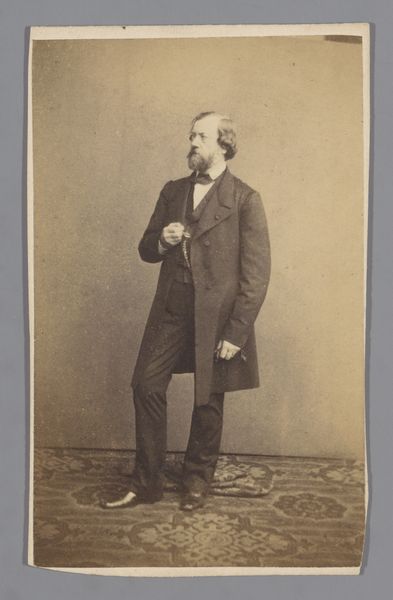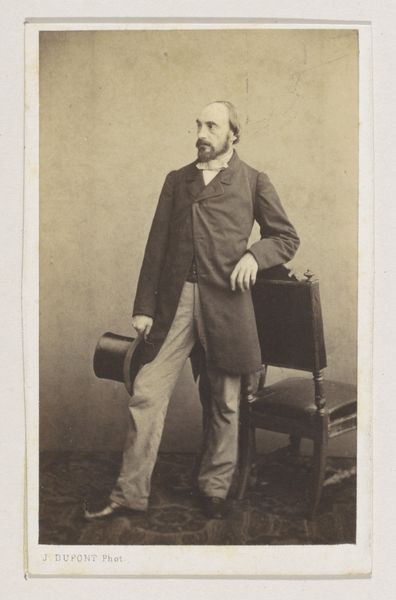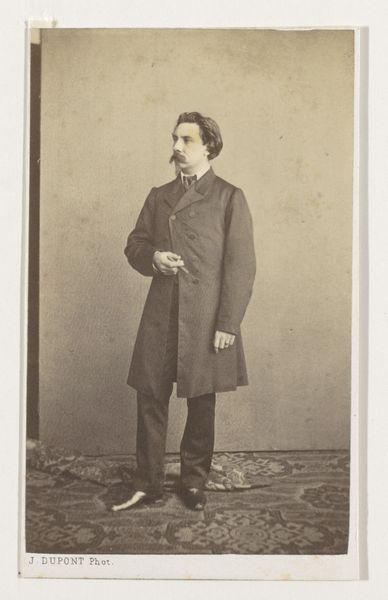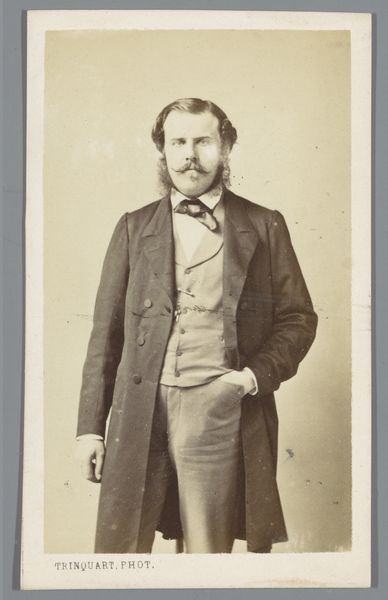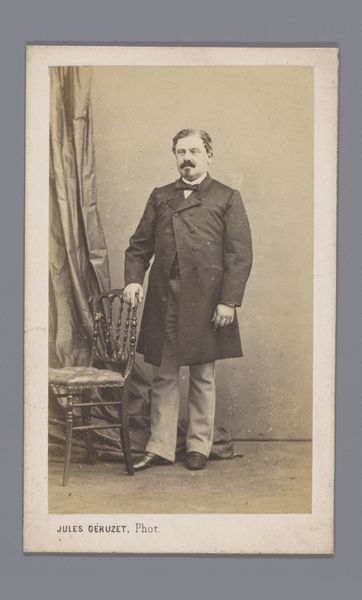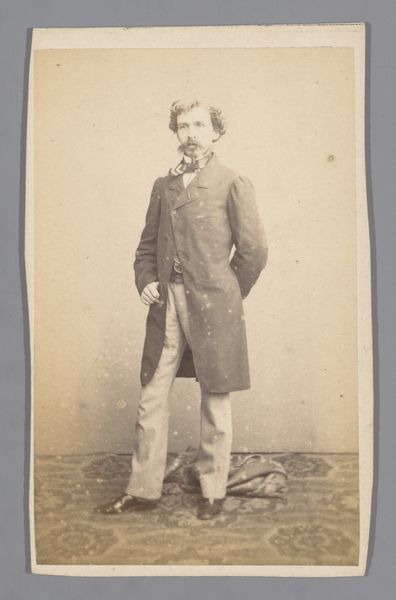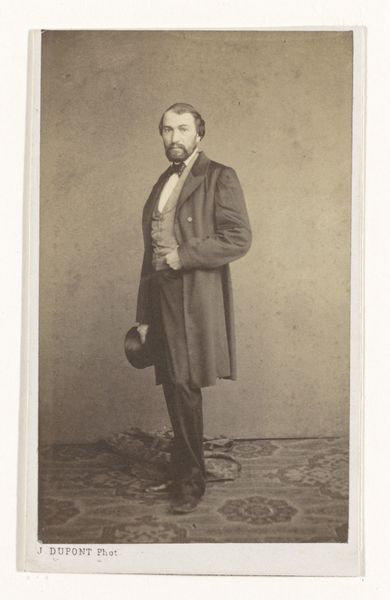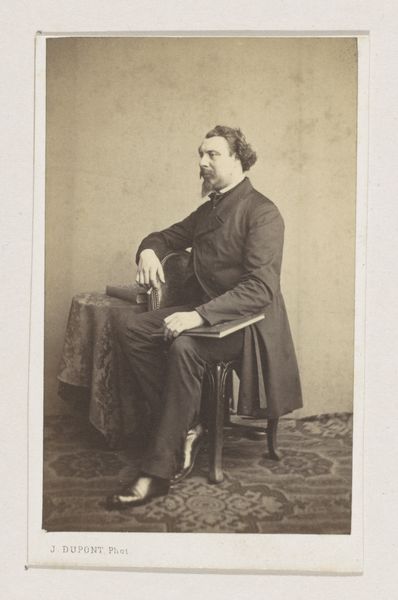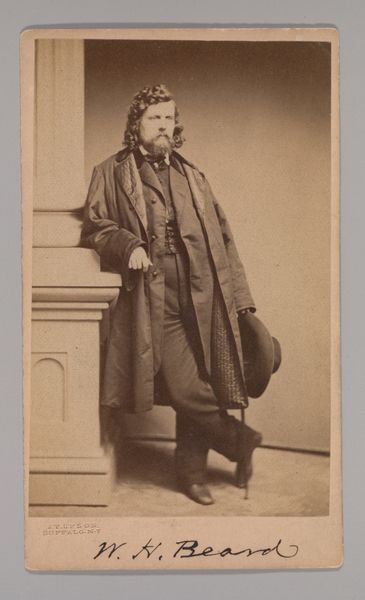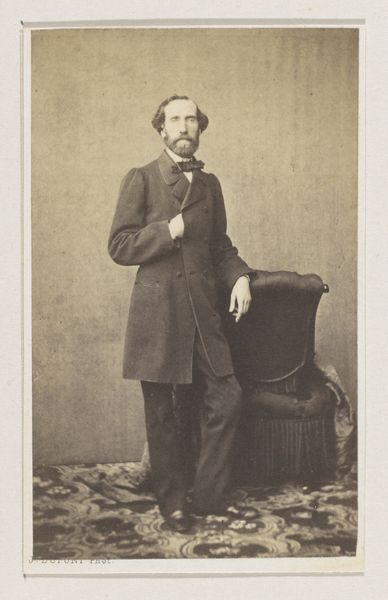
photography
#
portrait
#
photography
#
genre-painting
#
realism
Dimensions: height 103 mm, width 64 mm
Copyright: Rijks Museum: Open Domain
Curator: Here we have a photographic portrait from 1861 by Joseph Dupont titled "Portret van de beeldhouwer Jozef Geefs, ten voeten uit," or "Portrait of the sculptor Jozef Geefs, full-length". Editor: My immediate sense is formality; he seems captured in a pose, the lighting staged, and his clothing meticulously arranged for the photograph. It's almost austere. Curator: Well, certainly intended to project an image of bourgeois respectability. Geefs' posture, hand on hip, isn’t simply casual. It's a classic heroic stance, associating him with ideals of creative power and intellect, something of a romantic hero even. Editor: Right, but the material conditions of photography here interest me. Think about the equipment of that time, the development process; that warm sepia tone hints at albumen printing, which relied on egg whites and silver salts. It represents such an interesting moment in democratized image production. Curator: Indeed. But the fact it’s a *portrait* speaks volumes. Even within this relatively new medium, there’s an effort to capture not just likeness, but the subject's status and cultural significance. The drape to his side suggests classical sculpture; the carefully arranged coat evokes professional stature. Dupont is consciously linking Geefs to art history and the artistic establishment. Editor: I'd argue that Dupont, too, claims an artist's mantle here. The meticulous darkroom work, the composition...photography was establishing itself not merely as reproduction, but as creative practice. The tonal range and subtle texture make this far more than just a copy. It's about a shift in who controls making images. Curator: Of course. The photo gives dignity, but perhaps even celebrates his likeness and therefore work. A statement piece in itself; as a photograph capturing Geefs the artist it can stand as an evocative art piece of the time in its own right. Editor: Exactly. Think about all those unacknowledged hands preparing the plates, mixing chemicals... the photo's surface belies an intensive workshop system. Curator: Fascinating to look at the photograph this way. It enriches one’s view greatly of Dupont's choice to immortalize another artist through what was then a burgeoning artistic medium. Editor: Agreed. I came thinking simply about materials but am ending up pondering who controlled the means and reasons for his visibility at all.
Comments
No comments
Be the first to comment and join the conversation on the ultimate creative platform.

